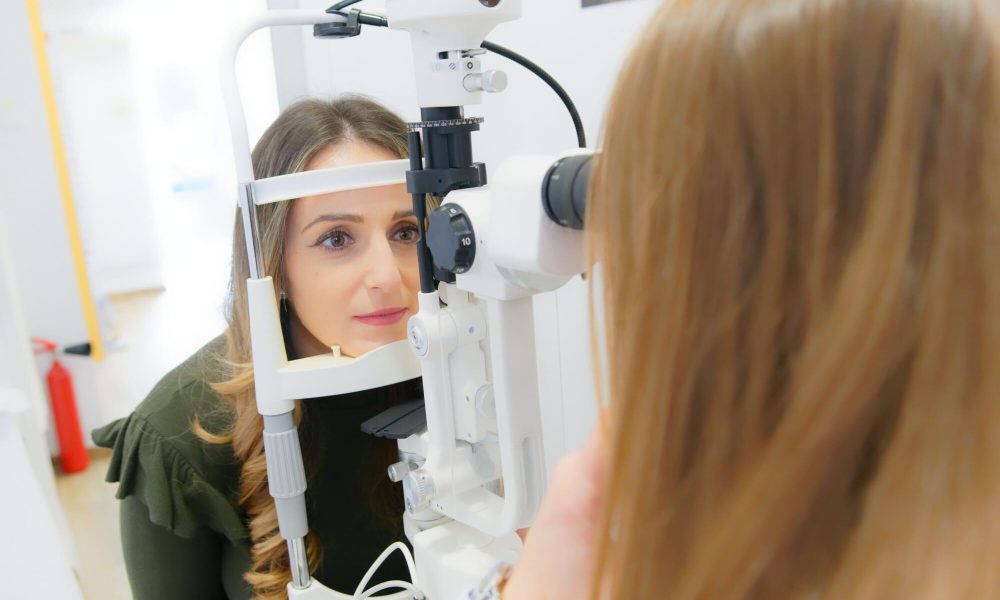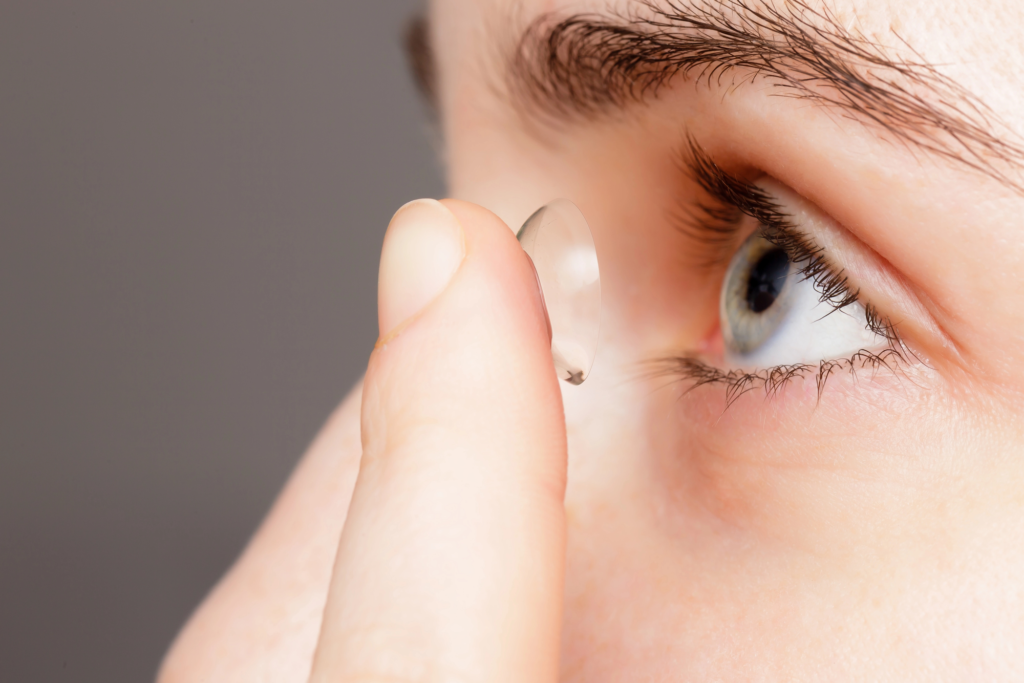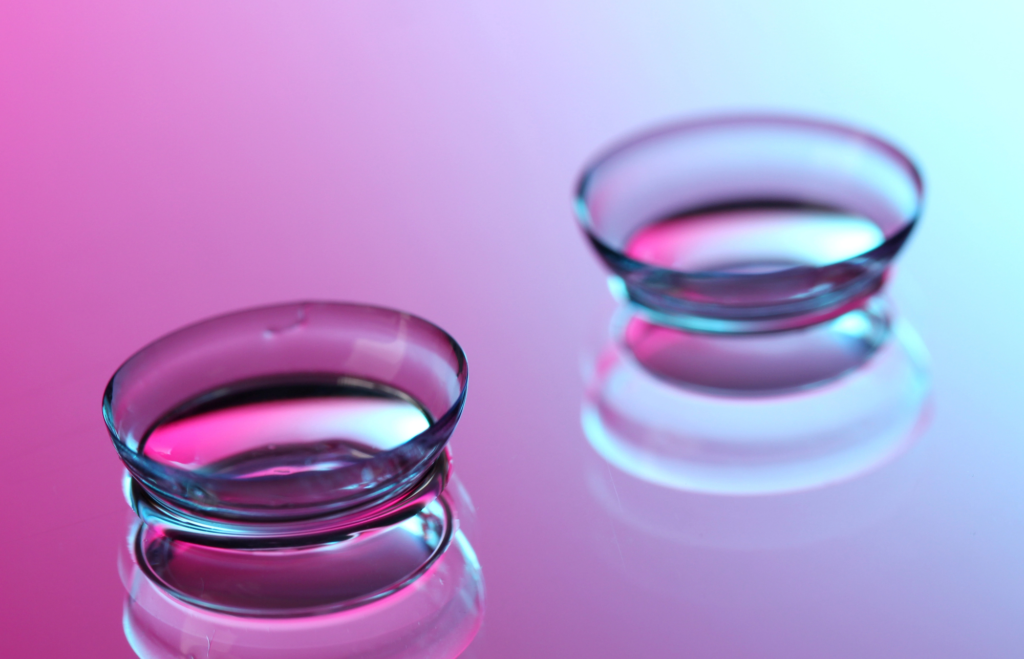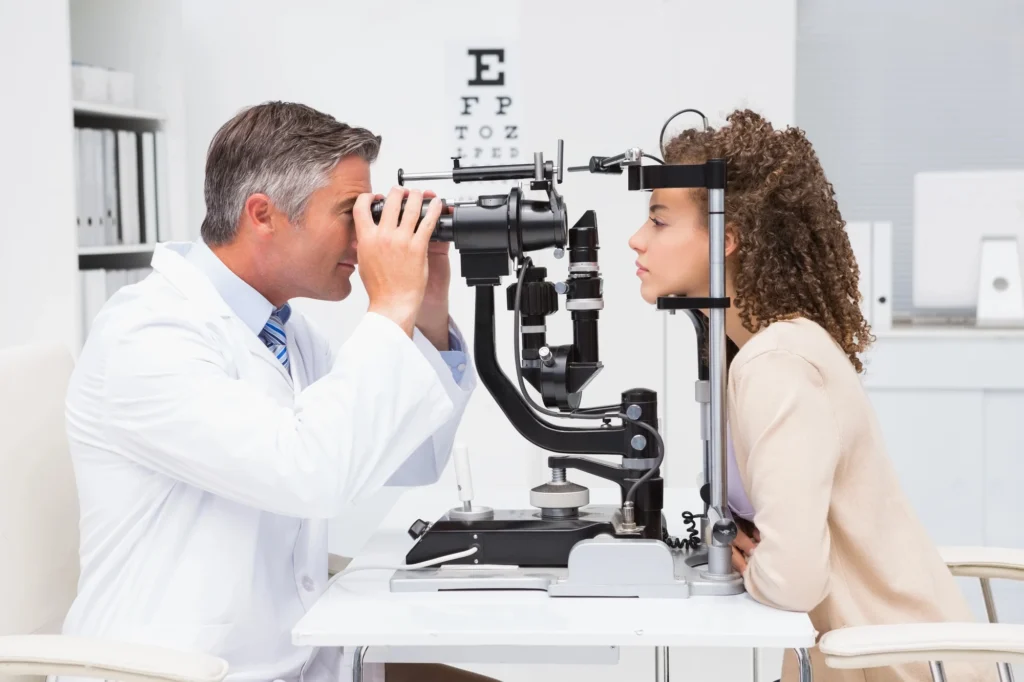The World Health Organization (WHO) estimates that cataracts cause 51% of blindness in the world. If you have cataracts, it’s important that you get treatment as soon as you can.
Cataracts tend to develop slowly but can cause a lot of damage if you don’t get treatment for them. It’s important to watch out for early signs of the condition and to get a professional opinion about them.
In this guide, we’ll list the 5 early signs of cataracts and tell you what you can do about them.
Understanding Cataracts: Symptoms, Causes, and Treatment Options
Early detection is key when it comes to managing cataracts effectively. By catching the condition in its early stages, you can take steps to slow its progression and reduce the risk of serious complications like blindness. If you’re asking, “What can you do about cataracts?”, it’s essential to understand the measures you can take to protect your vision.
What Are Cataracts?
Cataracts develop gradually over time, making it difficult to notice the changes in your vision at first. However, if left untreated, cataracts can significantly impact your daily activities and even lead to blindness.
What is the First Sign of Cataracts?
The first sign of cataracts is often blurry vision that cannot be corrected with new glasses or contact lenses. You might notice that your vision is becoming foggy or that colors appear less vibrant. Over time, this blurriness can increase, making everyday tasks such as reading or driving more challenging.
Causes of Cataracts
There are several causes of cataracts, with age being the most common factor. As you age, the proteins in the lens of your eye can start to break down and clump together, forming a cataract. Other causes include:
- Exposure to Ultraviolet (UV) Radiation: Prolonged exposure to UV rays from the sun can increase the risk of developing cataracts.
- Diabetes: High blood sugar levels can lead to the development of cataracts at an earlier age.
- Smoking and Alcohol Consumption: These habits are linked to a higher risk of cataracts.
- Eye Injury or Surgery: Previous eye injuries or surgeries can contribute to cataract formation.
- Genetic Factors: A family history of cataracts can increase your likelihood of developing the condition.
- Prolonged Use of Steroid Medications: Long-term use of corticosteroids can lead to cataracts.
Cataracts typically develop slowly, so you may not notice significant changes in your vision right away. However, if left untreated, cataracts can progress and lead to more severe vision problems, including blindness.
Fortunately, cataracts are treatable with a simple and common surgical procedure. Cataract surgery involves replacing the cloudy lens with an artificial one, restoring clear vision. This procedure usually takes around 30 minutes and is highly effective, with most patients experiencing improved vision shortly afterward.
Early Signs of Cataracts
Cataracts often develop slowly, but recognizing the early signs of cataracts is crucial for timely intervention. Here are the top symptoms to watch out for:
1. Clouded, Blurred, or Dim Vision
One of the most common early signs of cataracts is experiencing clouded, blurred, or dim vision. This occurs when proteins in the eye’s lens clump together, causing light to scatter and preventing clear images from forming on the retina. Over time, this cloudiness worsens, making daily activities like reading or driving more challenging.
2. Trouble Seeing at Night
As cataracts progress, many people experience trouble seeing at night. Low-light conditions become more difficult to navigate, and you may notice that driving at night becomes increasingly dangerous. This symptom is often accompanied by increased sensitivity to glare.
3. Sensitivity to Light and Glare
Sensitivity to light and glare is another early symptom of cataracts. You might find bright lights uncomfortable or even painful, especially when exposed to direct sunlight or headlights. This sensitivity is more pronounced with posterior subcapsular cataracts, which can cause significant discomfort in bright environments.
4. Seeing Halos Around Lights
Seeing halos around lights is a common issue for those with cataracts. This visual phenomenon occurs when light entering the eye is scattered by the cloudy lens, creating a halo effect around bright lights, particularly at night. This can interfere with activities like driving after dark.
5. Frequent Changes in Eyeglass or Contact Lens Prescription
If you find yourself needing to update your eyeglass or contact lens prescription more frequently than usual, it could be due to the progression of cataracts. Rapid changes in vision often signal that the cataract is advancing, affecting your eyesight significantly.
6. Fading or Yellowing of Colors
Cataracts can lead to fading or yellowing of colors, making the world around you appear less vibrant. This occurs as the lens of your eye begins to take on a yellow or brownish tint, which filters out certain colors and diminishes contrast. Over time, this can make it difficult to distinguish between different shades, impacting activities like choosing clothing or interpreting traffic lights.
7. Double Vision in One Eye
Experiencing double vision in one eye (diplopia) is another potential early sign of cataracts. This symptom arises when the light entering the eye is split by the cataract, causing you to see two images of a single object. Although double vision can also be caused by other medical conditions, cataracts are a common culprit when it occurs in just one eye.
8.Need for Brighter Light for Reading and Other Activities
As cataracts develop, you may find yourself needing brighter light for reading or other close-up tasks. This is because the clouding of the lens reduces the amount of light that reaches the retina, making it harder to see clearly in dim lighting conditions.
What to Do If You Notice These Symptoms
If you notice any of these early signs of cataracts, it’s important to consult with an eye care professional as soon as possible. Early detection and intervention can help prevent the condition from worsening and preserve your vision. Cataract surgery is a common and effective treatment that can restore clarity to your vision and improve your quality of life.
How to Slow Down Cataract Growth
While cataract surgery is the only definitive treatment, adopting certain lifestyle habits can help slow down the progression of cataracts and delay the onset of symptoms. Here are some effective strategies to protect your vision:
- Protect Eyes from Exposure to Sunlight
Excessive exposure to ultraviolet (UV) rays from the sun can accelerate the development of cataracts. To protect your eyes from sunlight, wear sunglasses with 100% UV protection and consider using polarized lenses to reduce glare. Additionally, wearing a wide-brimmed hat can further shield your eyes from harmful UV rays when you’re outdoors.
- Eat a Healthy, Well-Balanced Diet
A diet rich in antioxidants, vitamins, and minerals can help protect your eyes from oxidative stress, which contributes to cataract formation. Eat a healthy, well-balanced diet that includes:
- Dark leafy greens like spinach and kale
- Colorful fruits and vegetables rich in vitamins A, C, and E
- Whole grains
- Omega-3 fatty acids found in fish like salmon and in flaxseeds and walnuts
These nutrients support eye health and may slow the progression of cataracts.
- Maintain a Healthy Weight
Maintaining a healthy weight is crucial for overall health, including eye health. Obesity is linked to an increased risk of cataracts, as well as other eye conditions like diabetic retinopathy. Regular exercise and a balanced diet can help you achieve and maintain a healthy weight.
- Don’t Smoke
Smoking significantly increases your risk of developing cataracts, as it introduces harmful chemicals into your body that can damage the eye’s lens. Don’t smoke, and if you do, consider quitting. The benefits to your eye health—and overall health—are substantial.
- Reduce Alcohol Use
Excessive alcohol consumption is associated with a higher risk of cataracts. To protect your vision, it’s important to reduce alcohol use to moderate levels. Limiting alcohol intake can also benefit your general health, reducing the risk of various chronic conditions.
- Manage Other Health Problems
Conditions like diabetes and hypertension can increase the risk of cataracts. Manage other health problems effectively by following your doctor’s advice, taking prescribed medications, and making lifestyle adjustments as needed. Keeping these conditions under control can help protect your eyes and reduce the likelihood of cataract development.
- Have Regular Complete Eye Examinations
Regular eye exams are essential for early detection and management of cataracts and other eye conditions. Make sure to have regular complete eye examinations with your eye care professional. These exams can help monitor changes in your vision and catch potential issues before they become more severe.
Making the Decision to Get Cataract Surgery
While lifestyle changes can slow the progression of cataracts, surgery remains the only permanent solution to restore clear vision. If cataracts are negatively impacting your daily life, it may be time to consider cataract surgery. This common and safe procedure involves replacing the clouded lens in your eye with an artificial one, allowing light to pass through and restore your vision.
What Are the 3 Types of Cataract Surgery?
When deciding on cataract surgery, it’s important to know the different surgical options available:
- Phacoemulsification (Phaco): The most common type of cataract surgery, where an ultrasonic device breaks up the cloudy lens, which is then removed through a small incision.
- Extracapsular Cataract Extraction (ECCE): A procedure where a larger incision is made to remove the hard center of the lens in one piece, followed by suctioning out the remaining lens material.
- Laser-Assisted Cataract Surgery (LACS): This advanced technique uses a laser to create precise incisions and break up the cataract, often resulting in more accurate outcomes and faster recovery.
Restrictions After Cataract Surgery
After surgery, certain restrictions are necessary to ensure proper healing and avoid complications:
- Avoid strenuous activities: Refrain from heavy lifting, bending over, and vigorous exercise for at least a week after surgery.
- Protect your eye: Wear an eye shield at night and avoid rubbing or pressing on the eye.
- Keep water out of the eye: Be careful when bathing or washing your hair to prevent water from entering the eye.
- Avoid driving: Do not drive until your eye care professional confirms that your vision has stabilized and it is safe to do so.
- Follow your doctor’s instructions: Use prescribed eye drops and attend follow-up appointments to monitor your healing progress.
What Is the Fastest Way to Recover from Cataract Surgery?
Recovering from cataract surgery typically takes 1-2 months, but following these tips can help speed up the process:
- Follow Post-Op Care Instructions: Use the prescribed eye drops and medications exactly as directed.
- Rest Your Eyes: Avoid activities that strain your eyes, such as reading, watching TV, or using screens for prolonged periods, especially in the first few days.
- Wear Protective Eyewear: Use sunglasses to shield your eyes from bright lights and UV rays when outdoors.
- Attend Follow-Up Appointments: Regular check-ups with your eye care professional ensure your eyes are healing properly and any issues are addressed promptly.
Understanding What to Do About Cataracts
Cataracts are a leading cause of vision impairment, but early detection and proper management can help prevent serious complications like blindness. If you’re asking, “What can you do about cataracts?”, it’s important to understand the steps you can take to protect your vision.
- Recognize the Early Signs
To effectively manage cataracts, it’s crucial to recognize the early signs of cataracts. Symptoms such as double vision, discolored vision, and increased sensitivity to bright lights are key indicators that cataracts may be developing. These symptoms often start subtly but can progress quickly, so it’s vital to stay vigilant and consult an eye care professional if you notice any changes in your vision.
- Regular Eye Exams
One of the most proactive steps you can take is to schedule regular eye exams. Eye exams can detect cataracts in their early stages, even before you notice symptoms. Early detection allows for better management and can delay the need for surgery. If cataracts are detected, your eye care professional can monitor the progression and recommend the best course of action.
- Make Lifestyle Adjustments
Certain lifestyle adjustments can help slow the progression of cataracts and improve your overall eye health:
- Protect Your Eyes from UV Rays: Wear sunglasses with UV protection and a wide-brimmed hat when outdoors to reduce exposure to harmful UV rays.
- Eat a Nutritious Diet: A diet rich in antioxidants, vitamins, and omega-3 fatty acids supports eye health and can slow cataract development.
- Quit Smoking and Reduce Alcohol Consumption: Smoking and excessive alcohol use are risk factors for cataracts, so quitting these habits can be beneficial.
- Manage Chronic Conditions: Conditions like diabetes can accelerate cataract development, so managing your overall health is crucial.
- Consider Treatment Options
If cataracts begin to significantly affect your daily life, it may be time to consider cataract surgery. This procedure is the only definitive treatment for cataracts and involves replacing the clouded lens with an artificial one. Cataract surgery is safe, effective, and can restore clear vision, allowing you to return to your normal activities with improved eyesight.
FAQs
What are the first signs of cataracts in your eyes?
The first signs of cataracts often include blurry or cloudy vision, difficulty seeing at night, increased sensitivity to light and glare, and seeing halos around lights.
How do you detect cataracts early?
Early detection of cataracts is best achieved through regular eye exams, where an eye care professional can identify changes in your lens before symptoms become noticeable.
What age is considered early for cataracts?
Cataracts typically develop after age 60, but early onset can occur in people as young as 40 due to factors like genetics, diabetes, or prolonged UV exposure.
Can you fix cataracts early?
While cataracts cannot be reversed, early treatment with lifestyle changes can slow their progression. Cataract surgery is the only permanent solution once vision is significantly affected.
What does vision look like with cataracts?
With cataracts, vision may appear cloudy, blurry, or dim. Colors may seem faded, and there is often increased glare and halos around lights, especially at night.
What is the main cause of cataracts?
The main cause of cataracts is aging, which leads to the breakdown of proteins in the eye’s lens. Other causes include UV radiation, diabetes, smoking, and eye injuries.
How to prevent cataracts?
Prevent cataracts by protecting your eyes from UV rays with sunglasses, maintaining a healthy diet rich in antioxidants, avoiding smoking, limiting alcohol consumption, and having regular eye exams.
Cataracts are a common yet manageable condition that can significantly impact your quality of life if left untreated. By recognizing the early signs, making proactive lifestyle changes, and consulting with an eye care professional, you can take control of your eye health and prevent the progression of cataracts. If cataracts are already affecting your daily life, cataract surgery offers a safe and effective solution to restore your vision. Remember, early detection and timely intervention are key to maintaining clear, healthy vision for years to come. Don’t wait—take the necessary steps today to protect your eyesight and ensure a bright future.





